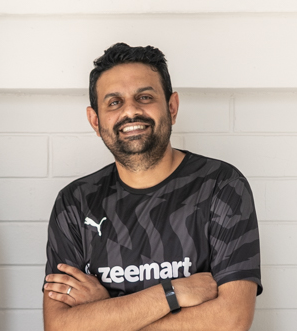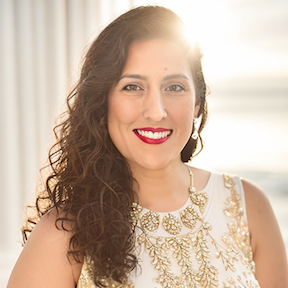SSP 04: Zeemart SaaS Tool for the F&B Industry
TODAY'S GUEST

Neeraj Sundarajoo, Co-Founder, Zeemart
When you don’t have relevant experience in a certain business, starting one seems like a losing venture, doesn’t it? But for Neeraj Sundarajoo the challenge of finding a recession-proof business and an extremely difficult one catapulted his entry to the F&B industry. After exiting their first business in the advertising industry, he co-founded Zeemart with Keith Tan.
Today, Zeemart is a universally recognised platform for F&B buyers and suppliers to conduct business in a trusted and secure environment, with offices in Singapore and Malaysia.
You'll Learn
– How did Neeraj and Keith get people to buy into their business when they have no relevant experience in the industry? Initially, why was Zeemart’s focus on generating value rather than revenue?
– Who were their first investors and how did they raise $2.2 million in investments, then another $7 million after that?
– What are the benefits of Zeemart to the F&B operators and suppliers, and to the food supply chain?
– How does Zeemart attract the right kind of talent to join their team?
Show Notes
01:09 What is the Zeemart vision?
Zeemart is about preventing restaurants and F&B owners from shutting down by bringing down the cost of goods. The vision of Zeemart is to help manage the cost at the back of the house from 35% of the revenue down to 25%. The benefits of digitizing the food supply chain will bring about economic success for F&B operators and suppliers.
03:03 How did Neeraj and his co-founder choose the F&B industry after leaving their first business venture in advertising?
Neeraj and Keith after leaving their first business venture were looking at three industries to start a new business. These are in child care, elder care and the F&B industry. They found that the F&B industry was a recession-proof one and they got excited into looking at solutions for the problem in the industry. Although they found that it is an extremely difficult industry, they decided that’s where they wanted to try and play and do something.
04:53 How did you get people to buy into your business when you have no relevant experience in the industry?
The experience and the exposure they had in running our previous business sort of gave them the segue into looking at things in greater depth, and understanding what the problem was, and trying to find out what they can do to try and solve that problem.
They started to speak to friends and family who became their first supporters. Soon there were supporters who saw what they saw and they believed that everything ends well with good execution.
06:37 What strategies did Neeraj and his team do to be able to get their first group of customers who believed in the solution they offer?
They had to look for a good group of customers who were willing to spend time with them. They built a product that will really help with the needs which most often the business owners do not really know. They started with a few customers, chefs, owners who are willing to give them a try. Today they are serving bigger groups of restaurants, caterers, hospitals and everyone who is dealing with F&B procurement. Of course, they still serve the smaller guys.
08:34 Why did they have to pitch differently, chefs first then to F&B business owners?
They did different pitches for chefs and business owners. They focus first on the chefs because if the chef says yes to them, then there is a chance that the owners will speak to them. Their pitch is more of value add and when they say value add, it is something different and something that they don’t already have or know. When the owner is ready to speak to them, then they pitch change a little bit.
10:16 How is Zeemart able to reduce, if not totally eliminate wastage and other sources of leakages in the F&B business?
The goal of Zeemart is to try and identify the source of leakages and it’s up to the owner to look at how they want to fix it. Wastages as pilferages are very rampant in developing cities but not as rampant as in SIngapore, but they still have to look at the costs of operation. Small wastage such as what’s the deal for gas cylinders are struck with suppliers.
11:04 What is the common denominator on the problem of productivity and efficiency of the supply chain from different Asian cities?
Even in big cities like New York, restaurant operators are having the same problem as with any other cities like Jakarta or Bangkok. It’s a big productivity and efficiency problem across buyers and suppliers.
12:04 How many clients have signed up for Zeemart and how was it offered to them as a value proposition?
We’ve got about 1000 restaurants that have signed up on Zeemart. There are about 300, who have already been onboard and actively using Zeemart.
13:04 What is the purpose of Zeemart’s focus on generating value first, instead of revenue?
Their focus is in trying to generate the value first because they wanted the restaurants to experience Zeemart’s value and feel that Zeemart is actually making a difference to their business and helping them. In the end they wouldn’t mind paying because of the value that Zeemart is bringing to their business.
14:11 Who were their first investors to build the viable product, the Zeemart app and what was the story in raising $2.2 million from friends and family who believed?
The very first investors of Zeemart were the founders. They wanted to make sure that they have their skin in the game themselves. So as founders, we put in money to try and build a minimum viable product that can actually go out in the market.
They went to speak to some of our friends and within three months they were able to raise $2.2 million.
17:12 How were they able to raise money from $2.2 million to $7 million? (…From whom did they get their first Venture Capital?)
A year later, from $2.2 million, this was raised to $7 million. One of the Venture Capital investments they got was from Vickers Venture. It was an interesting journey for them to be able to get that kind of support and every time they run out of money, more investors come in and tell them to do more of the go do more for the F&B industry.
18:56 What were the past experiences of their customers before they signed up with Zeemart? (… What did the current and new customers see in Zeemart?)
Their customers know that the products that Zeemart is constantly evolving and they’re very appreciative of that. They are constantly improving and evolving their products and they continue to have new customers. Customers who declined Zeemart a year ago, are now beginning to welcome Zeemart.
20:52 How do they make the distribution part more mainstream? (…Who do they work and partner with from the different sectors?)
They work with the associations, with the Chambers of Commerce, who are also trying to find ways to help pick sectors to gain momentum in productivity and efficiency. They are also very focused on the Point of Sale for the F&B sector, partner with companies in technology, product manufacturers and people who can actually help enhance the F&B business.
22:34 How does Zeemart attract the right kind of talent to join their team?
They hire smart and creative people and balance it between people who are experienced and inexperienced. In the words of Neeraj Sundarajoo, he said, “We give them a promise, we have an open culture, we have an open system, in collaboration in the organization, and we truly walk that talk, and we have systems in place, we will deliver that.”
25:32 What is Nareej’s personal vision?
Nareej’s vision is to grow their business to a billion dollar business quickly in the next 24 months.
 Hey, I’m Yasmine Khater, I am the founder of the Sales Story Method and host of the Sales Story Podcast.
Hey, I’m Yasmine Khater, I am the founder of the Sales Story Method and host of the Sales Story Podcast.
In case you don’t know me, here’s something about me. First, I know exactly what you’re going through. And I’ll tell you why.. I was not always persuasive. I had spent most of my life shy and afraid to speak up. I thought that getting someone to say yes was a talent that only a few people had.
Then I started to study the brain, and why people said no. Once I understood the reason behind their resistance, I realised that it all came down to their fears. And that true leadership is about helping others overcome their fears.
So I started to study what it takes to influence. My findings allowed me to crowdfund over $150K, build and sell a company, land speaking engagements and have full-page press coverage.
Over the last five years I’ve helped senior leaders in over 100 MNCs – including organisations like DBS, Salesforce, ClubMed, Danone and GoJek – and governments use stories to stand out, close sales, inspire their team and grow their businesses (and careers). I’ve also helped entrepreneurs raise millions in funds.
On a lighter note, I am an aspiring “armchair” neuroscientist, with a degree in Psychology and who loves to study the brain. I come from a mixed heritage and because I love exploring and learning about people and culture, I have lived in 7 countries and travelled to over a quarter of all the countries in the world.
Are you Ready to
Activate the Power of Your Own Story?
Stand out by Telling your own Story
Become the storyteller everyone remembers.
Do you struggle to craft your stories?
Do the people listening get lost or confused?
Do you find that projects take longer because your team/stakeholders/customers are misaligned?
Do you feel unsure of how to inspire people to get their buy-in and build your authority?



